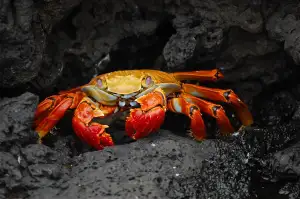Master the Art of Making Tempeh: Authentic Indonesian Soy Product Recipe

Tempeh is a traditional Indonesian soy product that has gained popularity worldwide for its unique texture and rich flavor. Made from fermented soybeans, tempeh is not only delicious but also packed with nutrients. It has a nutty taste and a firm, chewy texture that makes it a versatile ingredient in various dishes. Whether you're a vegetarian, vegan, or simply looking to incorporate more plant-based protein into your diet, mastering the art of making tempeh at home will open up a world of culinary possibilities. Join us on this journey as we explore the process of creating authentic tempeh from scratch.
Ingredients needed for making Tempeh
To make authentic Tempeh, you will need the following ingredients:
1. Soybeans: Choose high-quality, non-GMO soybeans for the best results. You will need about 2 cups of soybeans.
2. Tempeh Starter: This is a crucial ingredient that contains Rhizopus oligosporus spores. It helps in the fermentation process and can be purchased from specialty stores or online.
3. Water: You will need water to soak the soybeans and later to mix with the tempeh starter.
That's it! With just three simple ingredients, you can start your journey to mastering the art of making delicious homemade Tempeh.
Step-by-step instructions for making Tempeh
a. Soaking and cooking the soybeans: Start by soaking the soybeans in water overnight. Drain and rinse them thoroughly. Cook the beans in a large pot of boiling water until they are soft, but not mushy. This usually takes about 1-2 hours.
b. Mixing the soybeans with the tempeh starter: Once the soybeans have cooled down, transfer them to a mixing bowl. Add the tempeh starter (which contains Rhizopus mold) to the beans and mix well, ensuring that all the beans are evenly coated.
c. Fermenting the mixture: Take a clean plastic bag or container and spread out a thin layer of the soybean mixture inside it. Repeat this process until all of the mixture is used up. Make sure to press down on each layer to remove any air pockets.
d. Incubating the mixture: Place the bag or container in a warm area with a temperature between 85-90°F (29-32°C). Let it sit undisturbed for around 24-48 hours, allowing fermentation to occur. During this time, white mycelium should start forming around the beans.
Remember to check on your tempeh periodically during incubation to ensure it is progressing as expected.
These step-by-step instructions will guide you through making your own delicious homemade tempeh. Enjoy experimenting with different flavors and textures by adding spices or marinating before cooking!
Soaking and cooking the soybeans
Soaking and cooking the soybeans is the first crucial step in making tempeh. Start by rinsing 2 cups of soybeans under cold water to remove any impurities. Then, place the beans in a large bowl and cover them with water. Allow them to soak overnight or for at least 8 hours.
After soaking, drain the beans and transfer them to a pot. Add enough water to cover the beans completely. Bring the water to a boil over medium-high heat and let it simmer for about 1 hour or until the beans are tender.
To check if they are cooked, take a bean and press it between your fingers. It should easily mash without any resistance. Once cooked, drain the beans thoroughly and let them cool completely before proceeding to the next step of making tempeh.
Mixing the soybeans with the tempeh starter
After the soybeans have been cooked and cooled, it's time to mix them with the tempeh starter. The tempeh starter is a culture that contains Rhizopus mold spores, which are responsible for the fermentation process.
To start, take about 2 tablespoons of the tempeh starter and sprinkle it evenly over the cooked soybeans. Make sure to distribute it well so that every bean gets coated with the starter.
Next, gently mix the soybeans and starter together using clean hands or a spoon. You want to ensure that all the beans are evenly coated with the starter culture. This step is crucial as it allows the mold to grow and bind the beans together during fermentation.
Once mixed, transfer the mixture into a container or plastic bag. It's important to create small air pockets within the mixture by poking holes in it using a fork or toothpick. These air pockets will allow oxygen to flow through during fermentation.
After mixing and creating air pockets, press down on the mixture firmly to remove any excess air and create a compact shape. This will help in achieving a uniform texture and prevent any unwanted growth of bacteria.
Now that you have successfully mixed the soybeans with the tempeh starter, you're ready for the next step: fermenting the mixture.
Fermenting the mixture
Fermenting the mixture is a crucial step in making tempeh. After mixing the soybeans with the tempeh starter, it's time to let nature work its magic. The mixture needs to be fermented for around 24 to 48 hours at a temperature of around 30°C (86°F). During this time, the tempeh culture will start breaking down the soybeans, converting them into a solid cake-like structure. This fermentation process not only enhances the flavor and texture of the tempeh but also helps in increasing its nutritional value. It's important to maintain a consistent temperature and humidity level during this stage to ensure proper fermentation. Keep an eye on any signs of mold growth or off-putting odors, as these can indicate that something has gone wrong. Once the fermentation period is complete, you'll notice that the soybeans have transformed into a white cake with a nutty aroma. This indicates that your tempeh is ready for incubation.
Incubating the mixture
Incubating the mixture is a crucial step in the process of making tempeh. After mixing the soybeans with the tempeh starter, it is important to create an environment that promotes fermentation. To do this, transfer the mixture into a container and cover it with a clean cloth or plastic wrap. Make sure to poke small holes in the covering to allow air circulation.
The ideal temperature for incubation is around 86°F (30°C). You can achieve this by placing the container in a warm area such as an oven with only the oven light on or using a food dehydrator set at a low temperature. It is essential to maintain a consistent temperature throughout the incubation period, which typically lasts for 24-48 hours.
During incubation, you may notice white mycelium forming around the soybeans. This is completely normal and indicates that fermentation is occurring. The mycelium acts as a binder, holding the soybeans together and creating the characteristic texture of tempeh.
It's important to monitor the incubation process closely to ensure that no unwanted molds grow on your tempeh. If you see any black or green spots, discard the batch immediately.
After incubation, your tempeh should have a firm texture and be bound together by white mycelium. It will have a nutty aroma and slightly tangy flavor. Allow it to cool before removing it from the container.
Now that you've successfully incubated your tempeh, you can proceed to slice it into desired shapes and sizes. It can be pan-fried, grilled, or added to various dishes like stir-fries and salads.
Remember, practice makes perfect when it comes to making tempeh. Don't be discouraged if your first attempt isn't perfect – keep experimenting and refining your technique until you achieve delicious homemade tempeh every time!
Tips and tricks for successful Tempeh making
1. Use high-quality soybeans: The quality of your soybeans will greatly affect the taste and texture of your tempeh. Look for organic, non-GMO soybeans for the best results.
2. Properly soak and cook the soybeans: Soaking the soybeans overnight and then cooking them until they are soft is crucial for successful tempeh making. This process helps to remove any anti-nutrients and makes the beans more digestible.
3. Maintain proper fermentation temperature: The ideal temperature for fermenting tempeh is around 86°F (30°C). Use a thermometer to monitor the temperature during fermentation, as too high or too low temperatures can affect the growth of beneficial mold.
4. Ensure proper air circulation: During fermentation, it's important to provide proper air circulation to allow the mold to grow evenly on all sides of the beans. Place a few holes in the plastic bag or container you use for incubation to allow air to flow.
5. Use a clean environment: Cleanliness is key when making tempeh. Make sure all utensils, containers, and surfaces are thoroughly cleaned before starting the process to avoid contamination.
6. Experiment with different ingredients: While traditional tempeh is made with soybeans, you can also try using other legumes like chickpeas or lentils for a unique flavor profile. You can also add spices or herbs during fermentation to enhance the taste.
7. Don't rush the incubation process: Tempeh needs time to fully develop its flavors and texture. Avoid opening the container during incubation as it can disrupt the growth of mold and result in an uneven product.
By following these tips and tricks, you'll be well on your way to mastering the art of making delicious homemade tempeh that rivals even those found in Indonesian markets!
In conclusion, mastering the art of making tempeh is a rewarding experience that allows you to create an authentic Indonesian soy product right in your own kitchen. By following the step-by-step instructions and using the right ingredients, you can achieve a delicious and nutritious tempeh every time.
Once your tempeh is ready, there are endless ways to enjoy it. You can slice it and fry it until golden brown for a crispy snack or add it to stir-fries, salads, or sandwiches for an extra protein boost. Tempeh also makes a great meat substitute in vegetarian and vegan dishes.
For a flavorful twist, marinate your tempeh in a mixture of soy sauce, garlic, ginger, and honey before grilling or baking it. This will infuse the tempeh with a delicious umami flavor that pairs well with rice or noodles.
Whether you're a seasoned tempeh lover or just starting to explore this versatile ingredient, don't be afraid to experiment with different flavors and cooking methods. The possibilities are endless when it comes to incorporating tempeh into your meals.
So why not give it a try? With some patience and practice, you'll soon be able to master the art of making tempeh and impress your friends and family with this unique Indonesian delicacy. Enjoy!
Published: 04. 02. 2024
Category: Recipes



